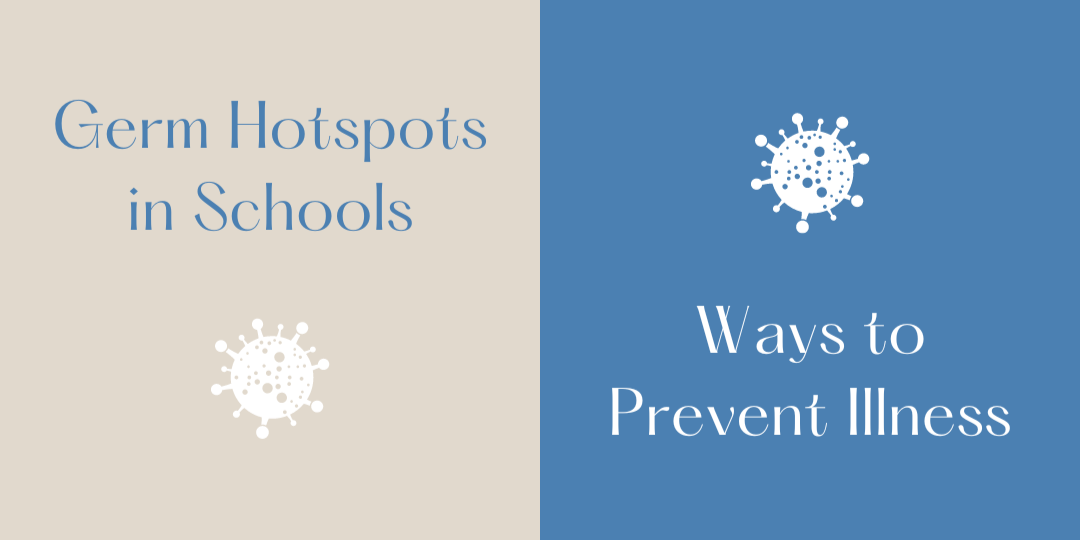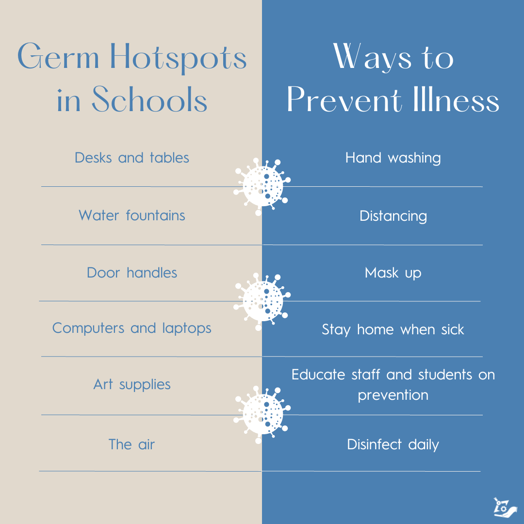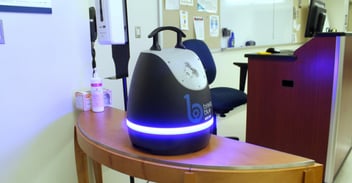
6 Germ Hotspots in Every School and 6 Ways You Can Prevent Illness
The "triple-demic" refers to the concurrent outbreak of three highly contagious and potentially dangerous respiratory viruses: respiratory syncytial virus (RSV), influenza (the flu), and coronavirus disease (COVID-19). This phenomenon has created a unique and difficult situation for healthcare systems, as all three viruses have similar symptoms and are spread in similar ways, making it challenging to diagnose and treat them. Furthermore, it has put a lot of pressure on hospitals and healthcare workers, as the number of patients requiring treatment for these illnesses has increased substantially. Children and older adults are at the highest risk, with tens of thousands of young kids getting hospitalized every year for RSV alone.
In addition, the ongoing COVID-19 pandemic has also caused disruptions to the usual flu vaccination campaigns, which in turn has led to an increase in flu cases. This, combined with the emergence of new variants for COVID-19, makes the "triple-demic" a major public health crisis that requires swift and coordinated action to be effectively managed.
Hotspots for Germs in a School
Schools are a breeding ground for pathogens, especially during winter. Teachers and administrators need to make conscious decisions to reduce disease spread. Staff members get sick too, and students often bring their sickness home to their elderly family members. When it comes to in-person learning, there will always be germs in a classroom, and certain spots tend to be more contaminated than others. Here are six germ “hotspots” in schools that should be disinfected daily, or even multiple times a day:
-
Desks and tables. This is a given - these surfaces are constantly being touched by students, and are easily covered in germs after an uncovered sneeze or cough. In middle and high schools, several students will use the same desk throughout the day, spreading germs from class to class.
-
Water fountains. Water fountains are a common source of germs, as students often drink directly from them and leave behind saliva and other germs. Encouraging students to use disposable cups or bring their own water bottles can reduce illness spread.
-
Door handles. Door handles are another high-traffic spot that can easily become covered in germs as people enter and leave a classroom. It is also a spot that people often skip when cleaning.
-
Computers and laptops. When students go to the computer lab or get Chromebooks for the day, they probably are not thinking about how many other kids used those devices. Without regular handwashing, laptops, keyboards, and mice can be a hotspot for germs.
-
Art supplies. Pens, markers, glue, and other supplies are often shared from table to table, class to class. No one knows what germs and bacteria may be on them, especially in the case of younger students.
-
The air. This triple-demic is composed of respiratory viruses which spread through droplets in the air. Coughing and sneezing can contaminate items such as those listed above, and the particles can linger in the air, allowing them to be inhaled by another student.
How to Prevent Illness Spread
Teachers and students can reduce the spread of RSV, the flu, COVID-19, and more with a couple of different tactics. Remote learning can have a negative effect on student outcomes and progress, as seen in the past couple of years (see how student scores dropped during the pandemic). Here are six ways to keep schools safe and healthy:
-
Hand washing. Encourage students to wash their hands regularly, and provide hand sanitizer around the school.
-
Distancing. Promote physical distancing by rearranging classrooms and other spaces to create more distance between individuals.
-
Mask up. Provide masks for students and staff.
-
Stay home when sick. Recommend staying home when students or staff are sick or have been exposed to a contagious illness, and offer remote learning options so students do not fall behind.
-
Educate staff and students. Share information on how to recognize and reduce the spread of viruses and other illnesses.
-
Disinfect daily.
Daily disinfecting can seem like a daunting task, especially in understaffed schools. It can require extra work for custodians and possibly for teachers to sanitize their classroom at the end of the day or between classes. When it comes to spraying and wiping, custodians/teachers have to find time to disinfect when they could be working on something else. Plus, they might miss key spots like door handles and other hotspots mentioned above. Hiring contractors to disinfect is costly and typically not done every day. For these reasons, school administrators are looking towards automated disinfection tools.
How Technology Makes Disinfecting Easy
Breezy Blue, the disinfecting minibot, is making disinfection easy for many schools. Breezy Blue can disinfect classrooms in roughly 60 seconds with the push of a button, allowing schools to disinfect easily and efficiently. It is important for schools to have a plan in place for daily disinfecting and for staff to be trained on how to properly clean and disinfect different surfaces and equipment, and it does not have to be a long or difficult process.
Preventing the spread of viruses and other illnesses is crucial, especially in schools during this triple-demic era. Regular cleaning and disinfecting of frequently touched surfaces and shared equipment can reduce disease transmission, along with other safe practices. By implementing these guidelines, schools can help to ensure the health and safety of students, staff, and the wider community.

GSK "Behind the Science" Magazine
Subscribe to Our Newsletter for More!




